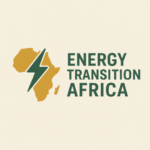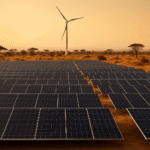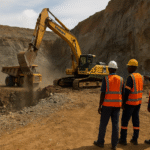It is one thing to pledge billions. It’s another to deliver them, transparently, equitably, and in ways that change lives.
In the aftermath of every COP summit or climate finance dialogue, we hear the familiar headline: “$100 billion pledged to help developing countries transition to clean energy.” But when the cameras fade and the reports gather digital dust, what happens to the money? Where does it go, who decides how it’s spent, and most importantly, do the people most affected by the climate crisis ever feel its impact?
The Climate Finance Maze
Africa, which contributes just about 4% of global emissions, faces some of the harshest climate impacts; floods, droughts, heatwaves, and food insecurity. The continent needs an estimated $2.8 trillion by 2030 to meet its climate goals under the Paris Agreement, according to the African Development Bank. Yet, what’s available is barely a trickle, and what arrives often disappears into a maze of intermediaries, overheads, and donor priorities.
According to a 2023 report by the Climate Policy Initiative, only 3% of global climate finance reaches Sub-Saharan Africa. Worse still, most of it comes as loans, not grants, pushing already fragile economies deeper into debt.
Donor Power and Africa’s Diminished Agency
In practice, climate finance remains largely donor-driven. Countries and institutions in the Global North set the terms, control the pipelines, and often channel funds through their own consultants, NGOs, or contractors, leaving African governments and civil society as implementers rather than decision-makers.
This creates a cycle where Africa is both dependent and disempowered.
The much-touted Just Energy Transition Partnerships (JETPs), like the one with South Africa, promised a new model. But even there, questions have emerged about slow disbursement, limited local ownership, and the dominance of foreign consultants. The recent US withdrawal from the JETP casts further doubt on the reliability of such schemes.
Where’s the Money Really Going?
A critical question we must start asking more boldly is this: What percentage of pledged climate funds actually reaches community-level projects?
Too often, resources are absorbed at national level or in capital cities. A significant portion funds workshops, assessments, or feasibility studies, while frontline communities still cook with firewood, lack solar power, or suffer from unmitigated flood risks.
This is not just a bureaucratic failure. It is a moral one.
The Case for a Public Climate Finance Tracker
If there’s one reform Africa should champion, it is the establishment of transparent, real-time tracking mechanisms for climate finance. Think of it like a digital dashboard, showing how much money was pledged, how much disbursed, which institutions received it, and what projects are being implemented.
Initiatives like the International Aid Transparency Initiative (IATI) and Climate Funds Update offer promising models. But few African governments or CSOs actively use these tools. The capacity exists. What’s missing is political will and pressure from citizens.
Civil Society’s Role: From Advocacy to Oversight
Civil society must step into a dual role, not only demanding climate finance but also monitoring how it flows. This includes:
- Conducting independent audits of national climate budgets.
- Publishing citizen reports on project implementation.
- Using radio, social media, and community meetings to demystify climate funding.
The more communities understand what climate finance is meant to do, the better equipped they are to demand results.
Toward a People-First Climate Finance Architecture
At its core, climate finance should serve the people. That means:
- Shifting power to local actors, not just national ministries or donor offices.
- Prioritising adaptation, especially for smallholder farmers, coastal communities, and vulnerable urban populations.
- Ensuring gender-responsive budgeting, so women, who are disproportionately affected are not just beneficiaries but decision-makers.
Conclusion: From Money to Meaning
If climate finance is to be truly “just,” then justice must begin with transparency, inclusion, and accountability. Africa cannot afford to be a passive recipient in a system that was never designed with it at the centre.
It’s time to follow the money, not just to trace dollars and cents, but to trace impact, equity, and power. Because the green transition will not be just, until those at the margins are also at the table.
🔗 Learn more: energytransitionafrica.com
🔗 Read related: Africa’s Climate Finance Crisis




Pingback: Striking the Balance: Energy Security Meets Just Transition in Africa - Energy Transition Africa